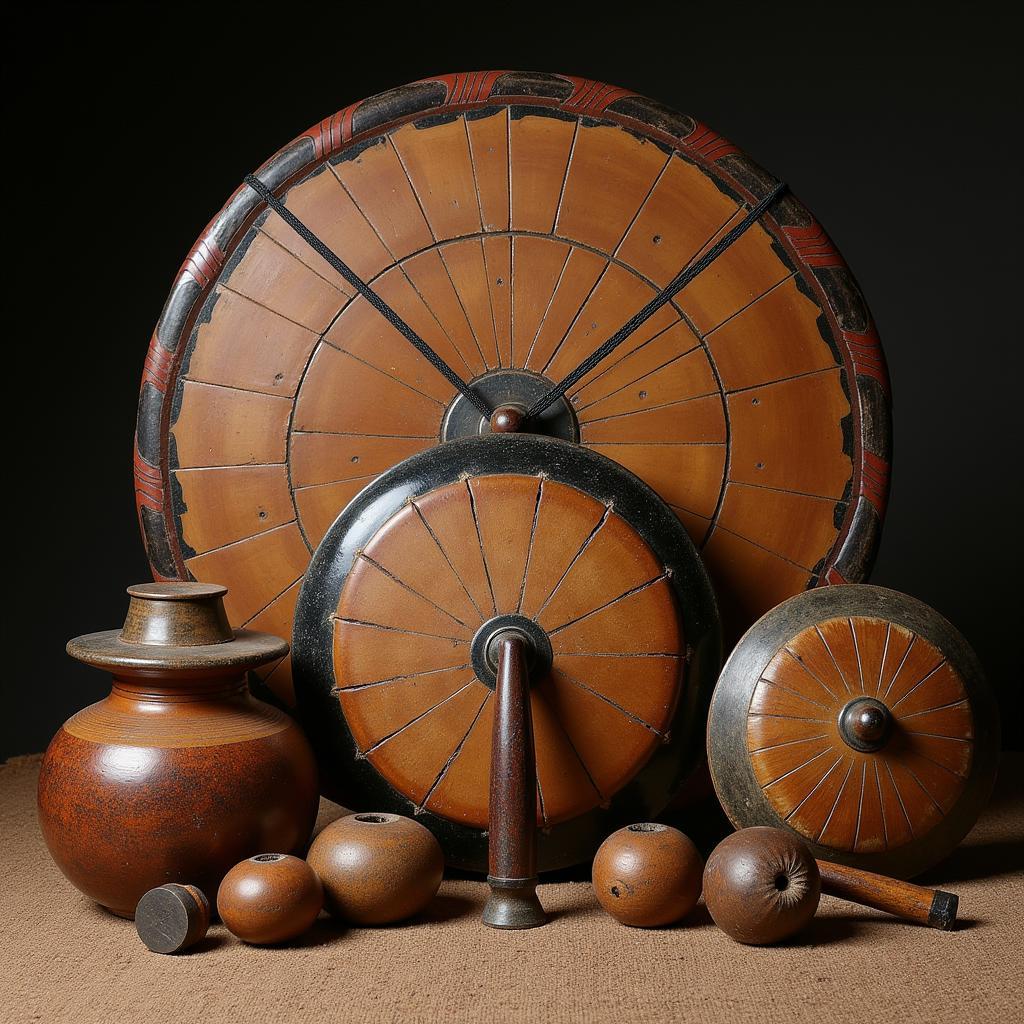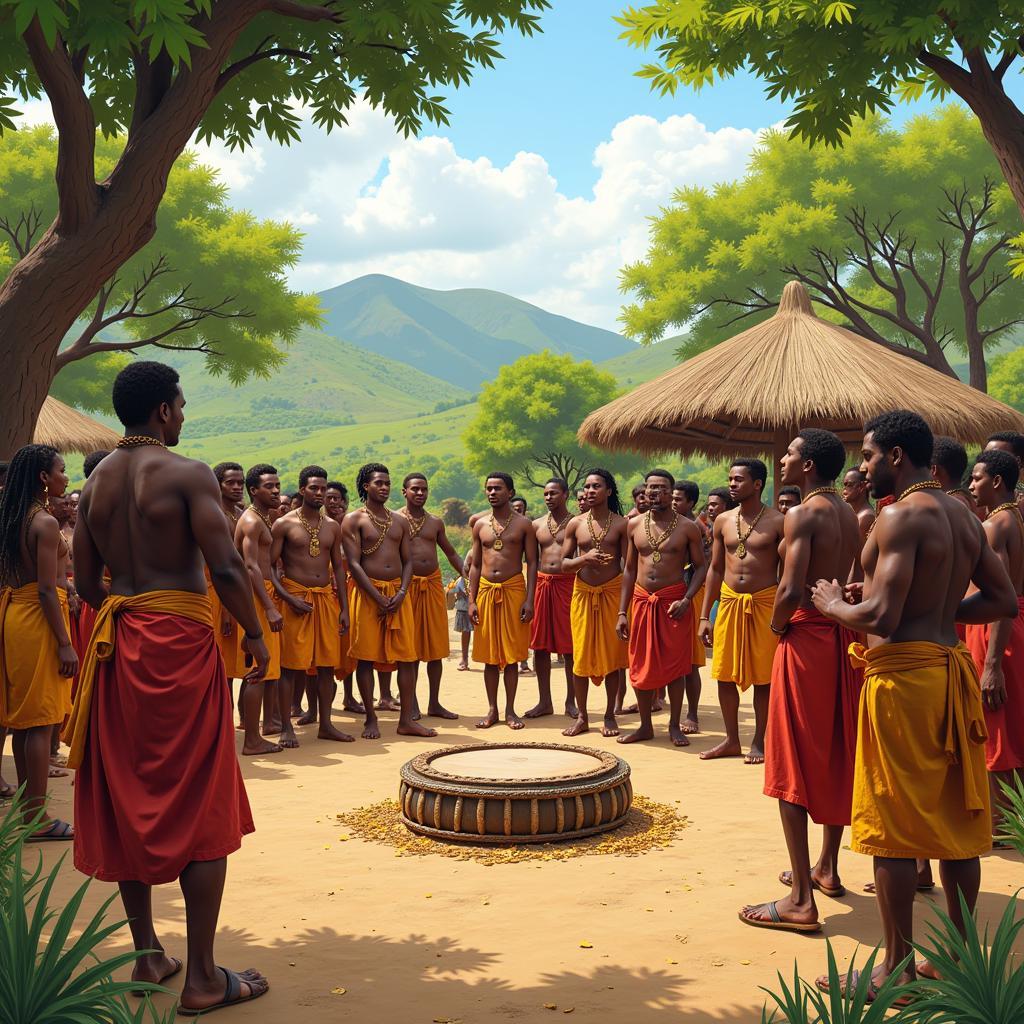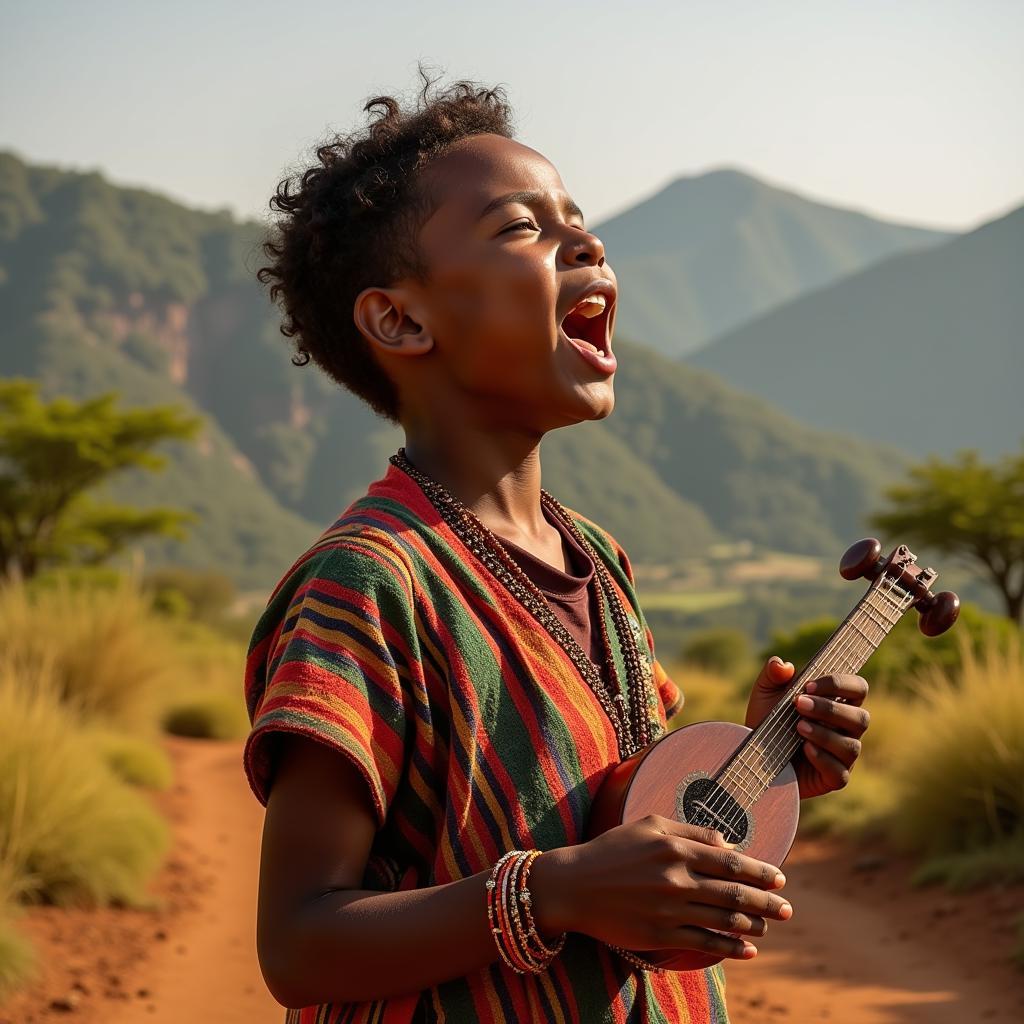Exploring the African Gong Gong Instrument
The African Gong Gong Instrument holds a captivating presence in the continent’s diverse cultures. From its vibrant sound to its symbolic significance, the gong gong serves as a powerful tool for communication, ritual, and artistic expression. This article delves into the rich history, varied uses, and cultural impact of this fascinating instrument.
The Rhythmic Heart of Africa: An Overview of the Gong Gong
The African gong gong, sometimes simply referred to as a “gong,” is a percussion instrument traditionally made of iron or bronze. It is struck with a mallet to produce a resonant, metallic sound. Its distinct timbre varies depending on the size, shape, and material of the gong. This instrument plays a vital role in numerous African societies, accompanying everything from religious ceremonies and social gatherings to african dance performance and storytelling.
What makes the African gong gong so unique? It’s not just an instrument; it’s a voice. It speaks the language of tradition, echoing through generations and carrying the weight of cultural significance. It’s a symbol of unity, a call to gather, and a celebration of life.
From Rituals to Rhythms: Unpacking the Diverse Uses of the African Gong Gong
The African gong gong’s role extends beyond mere musical entertainment. It is deeply embedded within the fabric of many African communities, serving a multitude of purposes. In some cultures, the gong is considered sacred, used in rituals to communicate with deities and ancestors. Its powerful resonance is believed to carry messages across vast distances, connecting the earthly realm with the spiritual.
The gong gong also serves a practical function, used to announce important events, signal danger, or call community members together. The distinct sounds produced by different gongs can convey specific messages, understood by those familiar with the local traditions. How does the african gong gong instrument produce sound? By skillfully striking the metal surface with a mallet, musicians create a wide range of tones and rhythms.  African Gong Gongs: Various Sizes and Shapes
African Gong Gongs: Various Sizes and Shapes
The Gong Gong in African Music: More Than Just a Beat
In musical contexts, the African gong provides a rhythmic foundation, driving the energy and momentum of the performance. It interacts with other instruments, creating complex layers of sound and texture. Its deep, resonant tones often represent the heartbeat of the music, providing a grounding presence that anchors the melodic and rhythmic elements.
Crafting the Sound: Materials and Techniques of Gong Gong Making
Traditionally, African gongs are crafted by skilled metalworkers using techniques passed down through generations. The process often involves melting and shaping iron or bronze, meticulously hammering and refining the metal to achieve the desired sound. Each gong is unique, reflecting the individual artistry of its creator. african gong craftsmanship is a testament to the rich cultural heritage of the continent.
How is an African Gong Gong Made?
- Gathering Materials: Sourcing suitable metal ores is the first step.
- Melting and Shaping: The metal is heated and poured into molds.
- Hammering and Refining: The cooled metal is hammered to achieve the desired shape and thickness.
- Tuning: The gong is carefully tuned to produce the correct pitch and resonance.
Awa Thiam, a renowned Senegalese artisan, explains: “Creating a gong is not just about shaping metal; it’s about shaping sound. Each strike of the hammer brings the instrument closer to its voice.”
The Cultural Significance of the Gong Gong in Different African Societies
The significance of the gong gong varies across different African cultures. In some societies, it is associated with royalty and power, reserved for ceremonial occasions and played by designated individuals. In others, it is a communal instrument, freely used in celebrations and everyday life.
The Gong Gong and Spirituality
The gong’s resonant sound is often seen as a bridge between the physical and spiritual worlds. It is used to invoke spirits, communicate with ancestors, and mark significant life events.  African Gong Gong Ritual Ceremony
African Gong Gong Ritual Ceremony
Dr. Kwame Nkrumah, an ethnomusicologist, notes: “The gong gong isn’t simply an instrument; it’s a vessel of cultural memory, carrying the echoes of generations past.”
The Future of the African Gong Gong: Preserving Tradition in a Modern World
As Africa evolves, the gong gong continues to adapt and find new expressions. Contemporary musicians are incorporating the instrument into modern genres, blending traditional sounds with innovative styles. This fusion of old and new ensures that the gong gong’s vibrant voice continues to resonate within African culture and beyond. Though the african god of dance might be a concept tied to ancient beliefs, the gong gong remains a living testament to the power of music and tradition.
Conclusion
The African gong gong instrument is more than just a piece of metal; it’s a powerful symbol of culture, tradition, and community. From its role in rituals and ceremonies to its contribution to music and dance, the gong gong continues to hold a significant place in the heart of Africa. Its resonant sound echoes through generations, connecting the past with the present and ensuring that the rich heritage of African music lives on.
FAQ
- What is an African gong gong made of? Typically iron or bronze.
- How is the sound of a gong gong produced? By striking it with a mallet.
- What are some of the uses of the gong gong in African culture? Rituals, ceremonies, music, communication.
- Does the significance of the gong gong vary across different African societies? Yes, its meaning and use can differ depending on the specific culture.
- Are African gongs still made today? Yes, both traditional and modern methods are used to create gongs.
- Can you buy an African gong gong? Yes, they are available for purchase from various sources.
- How do you care for an African gong gong? Keep it dry and protected from extreme temperatures.
Situations involving questions about African gong gongs:
- A student researching African music for a school project might ask about the gong gong’s role and significance.
- A traveler planning a trip to Africa could inquire about where to see or hear a gong gong performance.
- A musician interested in incorporating the gong gong into their music might ask about different types of gongs and playing techniques.
Further exploration:
- Learn more about other African instruments.
- Explore the history of African music.
- Discover the different musical traditions across Africa.
When you need help, please contact us by phone: +255768904061, email: kaka.mag@gmail.com or visit our address: Mbarali DC Mawindi, Kangaga, Tanzania. We have a 24/7 customer service team. Note: the link provided african kirayadar se mummy chudai hindi story does not seem relevant to the topic and wasn’t used.

